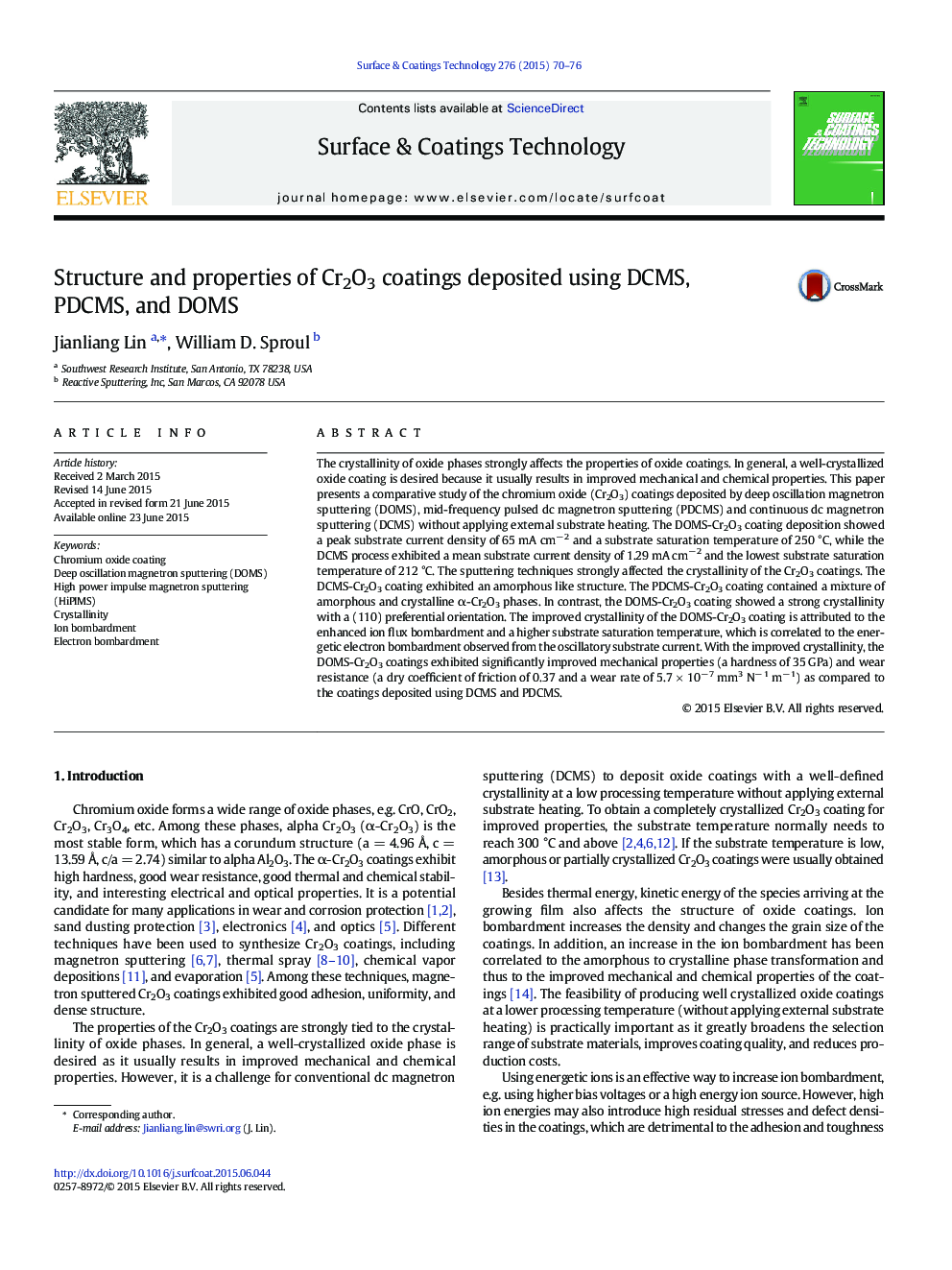| Article ID | Journal | Published Year | Pages | File Type |
|---|---|---|---|---|
| 1656958 | Surface and Coatings Technology | 2015 | 7 Pages |
•Improved crystallinity of the Cr2O3 coatings deposited by DOMS and PDCMS•Higher substrate saturation temperature during DOMS Cr2O3 coating deposition•Ion and electron bombardment oscillation during DOMS depositions•High hardness and excellent wear resistance of the DOMS Cr2O3 coatings
The crystallinity of oxide phases strongly affects the properties of oxide coatings. In general, a well-crystallized oxide coating is desired because it usually results in improved mechanical and chemical properties. This paper presents a comparative study of the chromium oxide (Cr2O3) coatings deposited by deep oscillation magnetron sputtering (DOMS), mid-frequency pulsed dc magnetron sputtering (PDCMS) and continuous dc magnetron sputtering (DCMS) without applying external substrate heating. The DOMS-Cr2O3 coating deposition showed a peak substrate current density of 65 mA cm− 2 and a substrate saturation temperature of 250 °C, while the DCMS process exhibited a mean substrate current density of 1.29 mA cm− 2 and the lowest substrate saturation temperature of 212 °C. The sputtering techniques strongly affected the crystallinity of the Cr2O3 coatings. The DCMS-Cr2O3 coating exhibited an amorphous like structure. The PDCMS-Cr2O3 coating contained a mixture of amorphous and crystalline α-Cr2O3 phases. In contrast, the DOMS-Cr2O3 coating showed a strong crystallinity with a (110) preferential orientation. The improved crystallinity of the DOMS-Cr2O3 coating is attributed to the enhanced ion flux bombardment and a higher substrate saturation temperature, which is correlated to the energetic electron bombardment observed from the oscillatory substrate current. With the improved crystallinity, the DOMS-Cr2O3 coatings exhibited significantly improved mechanical properties (a hardness of 35 GPa) and wear resistance (a dry coefficient of friction of 0.37 and a wear rate of 5.7 × 10− 7 mm3 N− 1 m− 1) as compared to the coatings deposited using DCMS and PDCMS.
